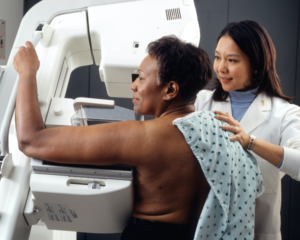 In honor of Breast Cancer Awareness Month, the Connections IN Health team is taking time to have serious conversations about the disparities of cancer rates among people of color. Breast cancer is the second leading cause of cancer deaths among women in the United States. Black women have the highest death rate of all racial and ethnic groups, with 42% more likely to die of breast cancer than white women.
In honor of Breast Cancer Awareness Month, the Connections IN Health team is taking time to have serious conversations about the disparities of cancer rates among people of color. Breast cancer is the second leading cause of cancer deaths among women in the United States. Black women have the highest death rate of all racial and ethnic groups, with 42% more likely to die of breast cancer than white women.
Breast Cancer Disparities: Black Women
A recently published white paper by the American Cancer Society’s Cancer Action Network complied the following research to give context to the growing breast cancer disparities within the U.S.
- In 2016, an estimated 31,000 Black women were projected to be diagnosed with breast cancer, and more than 6,000 were predicted to die from the disease.
- Breast cancer incidence rates have increased across all races and ethnicities since the 1980s (primarily due to increased detection by mammography), but while incidence among white women have generally stabilized in the past few years, incidence among Black women continues to rise.
Despite having similar incidence rates to white women, African American women are 42% more likely to die from the disease. - Black women are also more likely to be diagnosed with breast cancer at later stages of the disease and experience delays in treatment of two or more months after initial diagnosis. Long intervals between screening, lack of timely follow-up of suspicious results, and delays in treatment post-diagnosis likely contribute to the lower stage-specific survival among Black women.
Higher death rates among Black women likely reflect a combination of factors, including differences in stage of cancer at diagnosis, comorbidities, obesity rates, tumor characteristics, as well as timely access to screening, diagnostic and treatment services.
How Do We Reduce the Divide?
In the same paper, the Cancer Action Network discusses programs and policies that can work at both the state and federal levels to decrease disparities in breast cancer mortality in Black women. These include, but are not limited to:
- Increase access to the entire continuum of care
- Support for patient navigation
- Reducing risk factors for breast cancer
To learn more about the Cancer Action Network’s work and programming around your area, visit their website.
